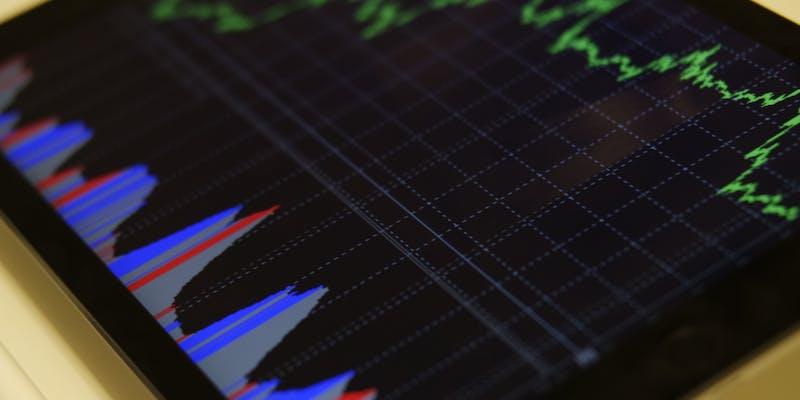The Concept of Scarcity in Economic Theory and It’s Important
Dec 08, 2023 By Susan Kelly
Scarcity is an economic notion based on a universal truth: our planet has limited resources, requiring distribution choices. Every object, no matter how tiny, represents scarcity since it uses resources that might have been used elsewhere.
This concept is so central to economics that items affected by scarcity are termed economic goods. In financial terms, these are goods where the demand would surpass the supply if they were free.
Even resources that seem abundant and freely available, like specific natural resources, can become scarce through overuse, leading to situations like the tragedy of the commons. Economists increasingly recognize essentials like clean air and a stable climate as scarce commodities due to the significant costs involved in preserving them, often incorporating a price for these in cost-benefit analyses.
History of the Concept of Scarcity
British economist Lionel Robbins succinctly captured the idea of scarcity in his 1932 essay. He suggested that if every valuable item, from necessities to rare art, were infinitely available at no cost, economics would lose its relevance. In such a hypothetical scenario, there would be no need for resource allocation strategies or economic theories to understand their impacts.
In reality, however, every production factor incurs costs, making every resultant product scarce. This scarcity is reflected in the concept of opportunity cost, which accounts for the potential alternatives forgone when choosing one use of resources over another.
Natural Resource Scarcity

When discussing natural resource scarcity, it's essential to realize that even abundant and free resources, like air or climate, aren't limitless and come with a cost. Although an intangible asset, the climate carries significant consequences for businesses and society when it changes. Clean air might be perceived as free, but achieving it often involves economic sacrifices to reduce pollution, and it holds immense value for health and quality of life.
Governments aiming to protect these resources may require companies, particularly manufacturing and utilities, to invest in pollution control or shift to cleaner energy sources. Initially borne by industries, these costs are eventually shared with taxpayers and consumers. The luxury of breathing clean air comes with a price tag.
Turning to the relative scarcity of inputs, this concept extends beyond the general notion of scarcity in economics and human existence. It pertains to the availability of factors or inputs used in production.
Consider a theoretical example involving the production of a widget, which needs two types of labor: workers and managers, requiring one manager for every 20 workers. If the available labor pool consists of 20,000 workers and 5,000 managers, there are more workers than managers.
However, given the required ratio for production (20 workers per manager), workers become a relatively scarce resource despite outnumbering managers 4 to 1 in the labor pool. This concept of relative scarcity can apply to any production factors, like land and dairy cattle. If milk production is limited more by the availability of pasture land than the number of cows, then land is a relatively scarce resource. Conversely, if the herd size is the primary constraint, then dairy cattle are the relatively scarce factor in this scenario.
Types of Scarcity
Scarcity arises in various forms, each defined by the factors causing an imbalance between supply and demand.
Demand-Induced Scarcity
This type of scarcity happens when consumer demand surpasses the available supply. It's a consumer-driven scenario where the desire for a product increases without a corresponding increase in its availability. Factors like an expanding customer base, consumer income growth, or preference shifts can spark these changes. A relevant example is the rising demand for electric vehicles, which could lead to a scarcity of specific components used in their batteries.
Supply-Induced Scarcity
Here, scarcity results from a reduction in supply while demand stays steady. Suppliers often drive this form of scarcity. For instance, a luxury doll maker discontinuing a product line creates scarcity since the demand for these dolls remains, increasing their perceived value. Environmental factors can also play a role, such as droughts or natural disasters reducing the availability of agricultural products or raw materials. The 2011 earthquake and tsunami in Japan significantly impacted the country's semiconductor manufacturing, which is a notable example. Supply-induced scarcity can be temporary or long-term, whether due to natural causes or deliberate decisions.
Structural Scarcity
Structural scarcity occurs when supply and demand are misaligned for certain groups but not others. This often stems from unequal access due to physical distance or financial limitations. For instance, the scarcity of authentic New York bagels in regions far from the U.S. East Coast results from geographical distance impacting availability. Financially, structural scarcity is evident when economically disadvantaged groups cannot afford essential products like clean drinking water. This type of scarcity highlights the disparities in accessibility among different populations.
Business Example of Scarcity

Scarcity tactics are a common and effective strategy businesses use in their marketing efforts. These strategies, often subtle, are a staple in various industries. Here are some examples of scarcity in businesses to boost sales:
- Travel and Hospitality: Travel companies frequently advertise how many times a room has been booked at a particular hotel within a day. This creates a sense of urgency and popularity around their offerings.
- Airlines: Airlines often alert customers about the limited number of seats left on a flight, pushing potential travelers to book quickly to avoid missing out.
- Online Retail: E-commerce sites display sold-out sizes or colors for products. This shows what's available and implies high demand for the items, suggesting they are popular and might sell out soon.
- Advertising Tactics: Businesses use phrases like "while supplies last" in their advertisements to suggest a limited availability of products, encouraging quicker purchase decisions.
- Seasonal Offerings: Coffee shops are known for creating seasonal, limited-time offerings, such as unique holiday flavors. These are available only for a short period, making them more desirable.
- Urgency on Websites: Many websites include countdown timers for special deals or offers, creating a sense of urgency to act before the offer expires.
- Stock Notifications: Businesses often announce when an item is "back in stock," subtly indicating to customers that the product is popular and had previously sold out, which can increase its appeal.
These examples showcase how businesses use the concept of actual or perceived scarcity to create a sense of urgency, exclusivity, or demand, ultimately driving sales.







